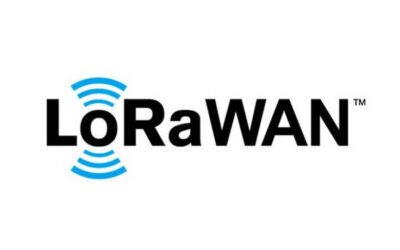What Is a Programmable Logic Controller (PLC)?

Manufacturing automation can’t do without a PLC. So, what is this device, and how is it applied in modern industrial settings?
PLC stands for programmable logic controller, which is typically used as a ruggedized device specifically aimed for operation in extreme environmental conditions to perform automated controls of crucial industrial operations. The first PLC was designed by Dick Morley in the late 1960s, which he created for the industrial needs of General Motors. Today, PLCs have become much more sophisticated, enabling continuous data processing and analysis by connecting numerous I/O devices and networked to other smart systems.
The use of PLCs is highly beneficial as non-human-friendly manufacturing settings still require real-time performance monitoring and control, while humans can’t stay in such environments for a long time because of considerable health and safety risks. Thus, PLCs continuously monitor manufacturing processes, ensuring their reliability, precision, and timely error detection.
Because of their durability and resistance to environmental extremes, PLCs are widely applied in the industrial settings characterized by:
- Temperature fluctuations
- Electrical noise
- Vibration
- Moist and dust
Besides their physical resilience, PLCs have acquired wide adoption in manufacturing because of the ease of programming, customization, and greater flexibility compared to previously used relay logic systems. Thus, they are widely used in:
- Process automation plants specializing in mining, oil, and gas processing
- Glass production
- Paper industry
- At thermal power plants (boiler temperature control)
- Cement manufacturing
This article introduces the basics of PLC use and answers the question, “what is programmable logic controller programming?”

How Does a Programmable Logic Controller Work?
How does a PLC operate? This is one of the fundamental questions that interest business owners or producers wishing to implement PLCs in their settings. Here are the basic principles of work and operation you need to keep in mind when planning to set up a PLC-operated system.
- The first point of data entry is the input scan, which detects the status of input devices connected to your PLC.
- The following step is the program scan, performing the operations programmed by the user.
- Next comes the output scan, activating the output devices connected to the PLC.
- The final point is housekeeping, which stands for the communication of your PLC with the programming terminal and real-time diagnostics.
These four primary steps are repeated in a loop, providing the continuous PLC operation in line with the programmed purpose. With this PLC working principle, you can quickly proceed to programming and applying your PLC in work.

Advanced Programmable Logic Controller Features
Every micro programmable logic controller possesses a set of generic features that users apply the way they need to make PLCs perform the intended industrial process monitoring.
- I/O. Each PLC functions by processing data from the input channels and activates the output device based on the received data processing outcomes. The I/O channels provide the PLC’s CPU with the data for analysis.
- This feature is the human-machine interface, standing for the programmable device supervising the PLC’s operation. The HMI may be a touchscreen display or a laptop, through which the operator programs a PLC and tracks the system’s performance in real-time.
- PLC communications with other system elements. Each PLC has a distinct communication protocol, which a user can utilize to export data from the PLC to an external device.

What Are the Different Types of PLCs?
When talking about PLCs, we also need to touch upon their types and where they are used. There are different classification approaches depending on the feature of focus. Thus, for instance, based on the output characteristics of programmable logic controller, PLCs are divided into three major types:
#1 Relay Output
This PLC type is the best match for AC and DC output devices.
#2 Transistor Output
This PLC type is suitable for switching operations, so it’s commonly integrated into microprocessors to enable this function.
#3 Triac Output
This type of PLC can control AC loads, while the transistor-output PLC can deal with DC devices only.
Other types of programmable logic controller devices are distinguished by their size (mini, micro, and nano PLCs). Some experts also distinguish PLCs by their manufacturer (e.g., a Delta PLC, Honeywell PLC, or Siemens) as each manufacturer equips their controllers with a specific set of features and qualities.

What Is Inside a PLC?
Now let’s find out what components a typical programmable logic controller contains to understand its architecture. As a rule, such a device contains:
- An I/O section with multiple inputs and outputs, with the former enabling the PLC’s physical connection to the sensors, switches, and panels it is meant to control. The latter are typically represented by a motor, a heater, or a solenoid, performing depending on the input signals coming in.
- The Central Processing Unit (CPU). This element of a PLC is responsible for the performance of all its programmed functions. In a nutshell, the CPU processes incoming data derived from the inputs and controls the output.
- The programming unit. While the CPU is responsible for performing the assigned tasks, a programming device, or unit, deals with the generation of those tasks. It may be a laptop or any other kind of computer that stores the programmed commands and controls the PLC.
- Power supply. Since a PLC is a piece of hardware, it cannot operate without power. Thus, you will always need a power supply source connected to the input and output devices within the PLC-controlled system.
- Memory storage. Here, you are free to choose any option, be it on-site memory storage or cloud storage. One thing is for sure; it’s vital to have secure, well-operating memory storage as it will hold all system data required for the PLC activities based on data processing.
How Is a PLC Programmed?
Given the variety of applications of programmable logic controller devices, users can program theirs in a ton of various ways depending on the intended sphere of application and expected functions. The process of programming is typically individually fitted to the use case, but its universal features and steps include:
- Analyze your PLC architecture and determine its use.
- Complete a flowchart with all required conditions for PLC functioning.
- Set the PLC configuration in the PLC programming software kit.
- Add the rungs you need for the intended functions’ completion.
- Complete the troubleshooting stage and save the changes.
- Download the program to your PLC’s CPU memory and activate the device.
Thus, the process of PLC programming is pretty straightforward if you know for sure what is expected from your controller and how to attain that goal.

What Programming Language Is Used to Program a PLC?
In most cases, Ladder logic is used to program PLC applications. Some experts also apply C++ to program PLCs for sophisticated operations. However, you can also use alternative approaches, such as the function block diagram, structured text, or sequential function charts, depending on your tech stack and the intended PLC use.
Advantages of Using a PLC
Why use a PLC microcontroller in industrial settings? Overall, PLCs have acquired such popularity and demand in a variety of industries exactly because of their ease of use and numerous application benefits they offer, namely:
- Speed of installation.
- Ease of the change of PLC programming logic, giving users practical flexibility.
- Reliability stemming from the absence of moving parts.
- Economical power consumption.
- Simple maintenance.
- Easy documentation.
- Straightforward coupling with process computers.
- Ability to perform closed-loop control programming.
- Precise and timely error detection and troubleshooting in hard-accessible industrial settings.
- Coverage of sophisticated logic operations.
Due to these advantages, PLCs find a variety of use cases in the industrial and enterprise settings, ensuring the precision and quality of production processes, as well as a greater degree of automation.
What Should One Know when Choosing a PLC?
PLCs are varied and diverse, both in features and in application terms. So, how can you determine which one is right for your needs? Here are the pro tips for choosing and using Programmable Logic Controller to maximize their value for your specific application domain.
Take a close look at the PLC components that we discussed above. Each of them is customizable, meaning that PLCs of different brands use distinct programming devices, memory cards, and CPUs. Thus, your choice should be based on the complex of architectural features you need from a PLC and thorough market research for the products fitting your technical specifications.
#1 CPU Characteristics
The sky is the limit to PLC features and functions, so you need to choose from the range of devices manufactured specifically for your industry and purpose. Each PLC contains a CPU responsible for its functions, so you need to check the CPU characteristics first to ensure that you’re buying a suitable device. Pay specific attention to the program memory, which is directly related to the speed and capacity of your CPU.
#2 I/O Check
The number of inputs and outputs, as well as their position on the PLC case, is one of the critical considerations when choosing the controller. It would help to double-check that the I/O number is sufficient to handle all your needs and join all devices.
#3 Environmental Requirements
Analyze the technical specifications of the selected PLC against the environmental conditions in which you’ll exploit it. For instance, most modern PLCs are dust- and vibration-resistant, yet they don’t stand extreme temperatures. So, if your environment has temperature fluctuations, you should pick a PLC from the temperature-resistant product range.
#4 Programming Language
The programming language used by a specific PLC matters much in terms of the device’s usability. If you need to reprogram the device, how easy will it be for a layperson to perform the task? Does the programming language of a specific PLC comply with the technical infrastructure of your existing system, and how well will the devices communicate? All these issues require a careful check to ensure a seamless integration experience.
Overall, the PLC selection is a tedious and responsible process with many nuances requiring consideration. Thus, if you are unsure which model to pick, you can always seek consulting services from ADUK. Experts at https://aduk.de/ are highly experienced in selecting PLCs based on specific business needs and technical specifications.
Conclusion
As you can see, PLC programming possesses enormous potential for a variety of business applications. With customized and properly selected PLCs, you can attain a great degree of automation and ensure that all machinery in your industrial settings works as it should.
Now that you know what is a PLC, it’s time to consider its choice or development from scratch based on your business needs. That’s what the experts of ADUK.de can help you with. Contact our experts at https://aduk.de/ and get in-depth consulting on the type of PLC you need for your business project. ADUK engineers also have years of expertise in customized PLC development. Thus, you can get a unique PLC product beating all usability expectations and delivering an advanced set of programmable features and functions.
Recent Posts
- What Is an Exoskeleton Suit?
- Where can you use an ultrasonic motor?
- Smart Camera: System That You Can Use for a Wide Variety of Purposes
- Why Is the Smart Toothbrush Better Than a Regular One?
- Microcontrollers: An Integral Part of Embedded Hardware
- Air Quality Monitoring System: Why It’s So Important in Modern Realities





